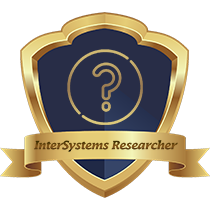Hi Michael,
To summarize, HealthConnect is built on top of Ensemble. If you are getting HealthConnect, you must also have Ensemble.
Here is the main difference: Ensemble in an Interface Engine that is used primarily to receive data in most common formats and transform the data before re-sending transformed data to another destination. Ensemble supports FTP File Transfer, SQL Transfer (with a connection to another DB), HTTP Transfer and TCP Transfer. As part of TCP Transfer there is also support for HL7 Standard. The outbound support is the same as for inbound. As part of Ensemble there are Transformation Languages (BPL, DTL) that allow you to transform your data.
HealthConnect has all of that but because it is specialized, in addition to the above transfer modes, it also implements the IHE IT Infrastructure Technical Framework (if you search for it you will get its documentation on the IHE web site). In order to implement the framework, in addition to the Interface Engine, you have to have a set of Configuration Databases (Registries). This is what HealthConnect provides. In a nutshell, with HealthConnect, you can process and transform not only HL7 messages but also Continuity of Care Documents (CCDs) - XML-based documents that are typically delivered via SOAP messages with a specialized SOAP Body (IHE Transaction) and a payload/attachment (the CCD document itself which is typically b64-encoded). HealthConnect also has a native intermediate XML format (SDA) and it provides ready-made (and customizable) XSLT transforms that can transform the CCD to and from this native format.
I hope this helps.
Hi Kurro,
1) The best way to debug SOAP issues is to enable SOAP Logging on the client side.
On your Cache server, use Terminal to zn to the namespace from which the request originates and type:
NAMESPACE> set ^ISCSOAP("LogFile")="C:\temp\SOAP.log"
NAMESPACE> set ^ISCSOAP("Log")="ios"
and then retry your GET/POST. You should see messages in the file above.
To turn off logging, type:
NAMESPACE> set ^ISCSOAP("Log")=""
2) If you try this you will likely see the same error in the SOAP log. So the most likely issue is the ContentType property of your HttpRequest object.
In your Business Operation, your probably have code like this somewhere:
Set tHttpRequest = ##class(%Net.HttpRequest).%New()
Set tHttpRequest.ContentType = "text/xml" // is this property set?
Here is the message from the class on its default behavior:
/// is not specified and there is an <PROPERTY>EntityBody</PROPERTY> then it default
/// to 'text/html'.<p>
...
So if you used HttpRequest.EntityBody for your payload, you probably need to set ContentType explicitly.
I hope this helps.








Hi Stuart,
I see in this line: set jsoninput = [].%FromJSON(file)
I am not sure this is correct. Can you try set jsoninput = {}.%FromJSON(file) ?